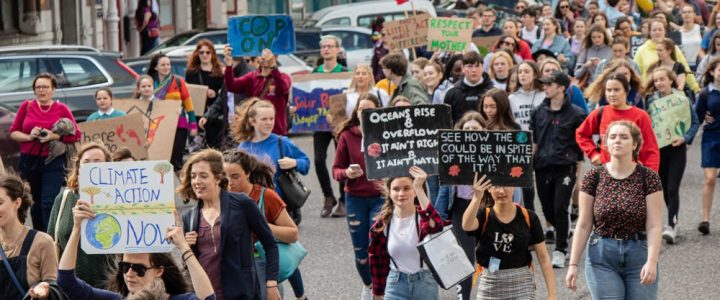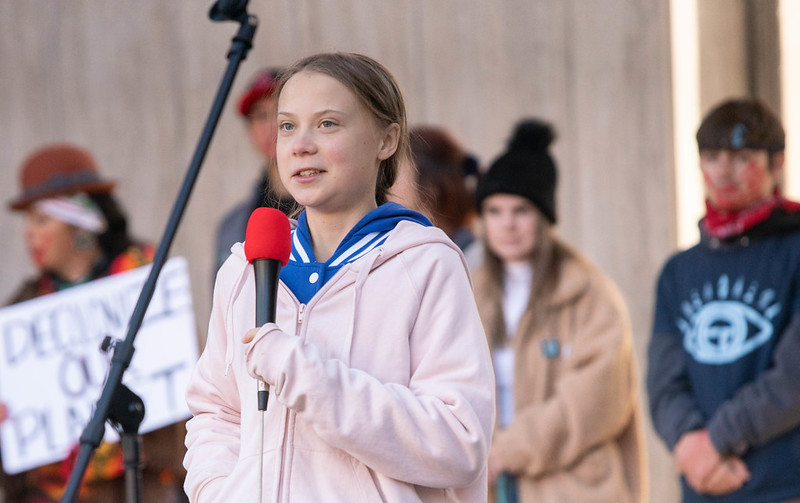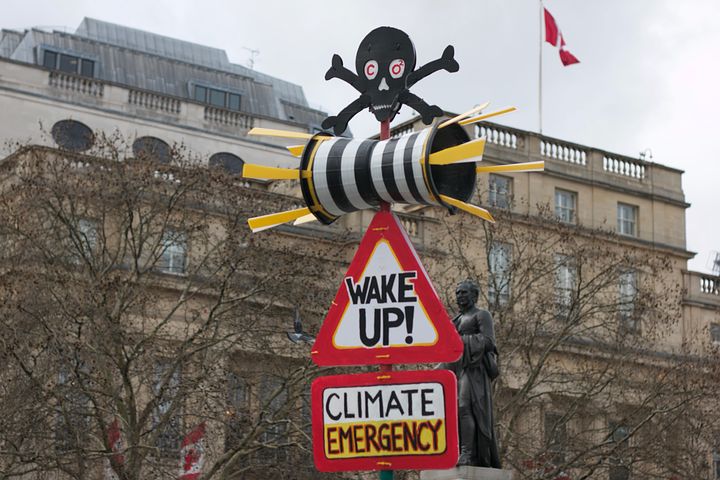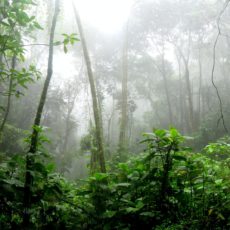
The International Day of Climate Action occurred on October 24th 2009, and was organized by 350.org. It was the first event of its kind, to mobilize individuals through coordinated efforts throughout the world. But it wasn’t the last of its kind – each year since has seen further worldwide strikes, marches, and protests. The heart of the day was, and remains, climate justice. Globally, climate issues do not affect all communities equally, with poor nations, women and young people bearing the brunt of adversities caused by climate change. Even in wealthy nations climate injustice is prevalent, with the racial makeup of communities being the number one indicator for the placement of facilities that emit toxic waste in the United States. Being that many of the world’s climate justice issues are due to corporate globalization led by large organizations seeking to maintain their status quo, community-based and grassroots movements are the only ones that can be trusted to lead this change.

Considering the confidence that can be held with grassroots movements, it’s refreshing to see much of today’s climate action is being led by young people. At the forefront is Greta Thunberg, a 16 year-old climate activist who has gained a massive following through her Fridays For Future campaign, which she began by protesting the Swedish Parliament for not acting urgently enough to combat the global climate crisis. In addition to Thunberg and her campaign, some of the other youth organizations at the forefront of these grassroots movements are Zero Hour, led and founded by Jamie Margolin and Sunrise Movement. The importance of youth movements leading this charge is that young people are set up to be the ones facing the ever-amplifying environmental catastrophes. Since older generations have leaned more toward complacency in regard to climate action, they have less of a right to lead the charge now. Fortunately, these youth movements are growing and they’re doing so by toeing the line between fear and hope in a way that’s inclusive and empowering.
Though Greta Thunberg began protesting by herself just over a year ago, she recently led a rally in Montreal with 500,000 in attendance. While in Montreal she also met with Canadian Prime Minister Justin Trudeau. A few days before Montreal, Thunberg led a rally in New York City with an estimated 300,000 in attendance. These rallies were kicked off with Thunberg addressing the United States Congress and coincided with a global climate strike that ran from September 20-27. During that week 7.6 million people in 185 different countries came out to support a call for more urgent climate action. One of the most important takeaways is clearly the sheer number of attendees. The voice of young people was heard throughout the world in an undeniable way that is galvanizing the global environmental discussion.
After Thunberg’s rally in Montreal, she continued west holding climate strikes in Chicago, Iowa City and Rapid City. The Rapid City climate strike was of particular importance because of its focus on the climate injustice spawned by the Keystone XL Pipeline. The negative externalities of the pipeline have long been demonstrated with oil spills posing constant threats to drinking water sources, sacred land and wildlife habitat. With climate justice being in the center of the motivation for the increase in urgency and action to combat climate change, Greta Thunberg used her platform to elevate the voice of the indigenous peoples most effected by the pipeline’s installation. Fellow 16 year-old activist, Tokata Iron Eyes, was born in the Standing Rock Reservation where the most intense protests occurred and spread the message of how climate solutions should be in close association with indigenous cultural values, which have long taught the importance of respecting nature and living in harmony with the land.

After Rapid City, Thunberg held a climate strike in Denver and then went north to hold another one in Edmonton. While in Canada, Thunberg continued the theme of fighting for climate justice by joining forces with indigenous Canadians to ensure that climate solutions are inclusive. Thunberg will continue her tour by leading a climate strike in Vancouver this Friday and plans to continue leading climate strikes throughout the rest of the Americas.
In the context of 10 years since the International Day of Climate Action, Greta Thunberg along with the other youth climate movements mentioned, embody what this day has always been seeking to achieve: uncompromising leadership in the face of extreme adversity. Given the global complexities of solving this climate crisis, the international approach Thunberg has taken will prove to be fruitful. It’s inspiring to see that a cascade of world leaders is beginning to take direction from young people, knowing that when it comes to this discussion, their voice matters more.

With all of this being said, please answer our call to take action by participating in a climate strike or leading a climate strike of your own. The youth organizations mentioned in this article are excellent places to begin making a difference. Feel free to comment where you plan on striking!



